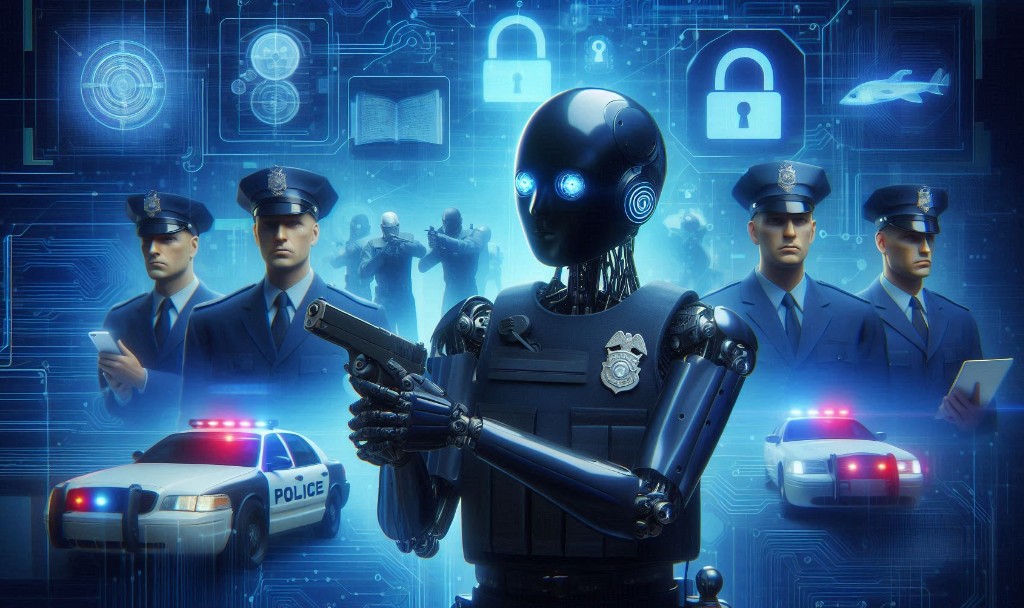In recent years, there has been a significant advancement in the field of Artificial Intelligence (AI) and Augmented Reality (AR). These technologies have become increasingly popular and have the potential to enhance virtual experiences in various fields such as gaming, education, healthcare, and...
How AI Assists Police in Effectively Fighting Crime

The integration of artificial intelligence within law enforcement agencies is revolutionizing traditional approaches to maintaining order and safety. With advancements in technology, tools powered by AI are making it easier to detect patterns, analyze data, and predict potential risks. These innovative solutions are transforming the way authorities respond to challenges, enabling quicker, more informed decisions.
By harnessing the power of machine learning and advanced algorithms, law enforcement can process vast amounts of information faster than ever before. From monitoring public spaces to identifying suspicious activities, AI-driven systems provide enhanced capabilities that improve overall safety measures and facilitate a proactive approach to security.
AI-Driven Crime Detection Techniques
Advanced algorithms and machine learning models are reshaping the way illegal activities are identified and predicted. By leveraging large-scale data analysis, AI can uncover hidden patterns, flagging unusual behaviors or identifying potential threats before they escalate. These systems use a combination of real-time data and historical information to enhance detection capabilities, offering a more dynamic approach to public safety.
AI tools are capable of monitoring various data sources, such as surveillance cameras, social media, and sensor networks, to detect anomalies in behavior or environment. For example, AI can analyze video footage for suspicious movements, recognize faces in crowded spaces, or even assess audio signals for distress calls. These methods not only improve the speed and accuracy of detection but also reduce the reliance on manual observation.
How AI Enhances Crime Prevention Strategies
Artificial intelligence is revolutionizing the way risks are anticipated and managed, making it possible to reduce the occurrence of illegal activities before they take place. By analyzing massive amounts of data, AI-driven systems are capable of identifying early warning signs and trends, allowing authorities to take proactive measures. These systems do not just react to incidents, but can predict where incidents are more likely to occur based on patterns and historical data.
- Predictive Policing: AI algorithms analyze crime trends and demographic data to forecast where criminal events may be more probable. This approach enables targeted resource deployment and the prevention of potential incidents.
- Behavioral Analysis: Machine learning models can assess unusual or risky behaviors, such as loitering or aggressive actions, by analyzing live video feeds or sensor data in real-time, alerting officials to take action before an event escalates.
- Public Safety Networks: AI systems can link various safety infrastructures, such as surveillance cameras and sensors, to create an interconnected network that shares vital information, increasing overall situational awareness.
By focusing on identifying and neutralizing risks ahead of time, AI is not only enhancing current preventive measures but also improving the effectiveness of law enforcement efforts in deterring potential offenses before they occur.

The Role of AI in Investigating Criminal Activities
Artificial intelligence is becoming an invaluable tool in solving complex cases by offering new ways to analyze and interpret evidence. With the power of machine learning and data analysis, AI is streamlining investigative processes, enabling authorities to uncover leads, connect the dots, and identify patterns that would otherwise go unnoticed. This approach accelerates the resolution of cases and enhances the accuracy of investigations.
Data Analysis: AI can process vast amounts of data from various sources, such as digital footprints, surveillance footage, and forensic reports. It sifts through these large datasets to uncover critical clues that might not be visible to the human eye, helping investigators focus their efforts on the most promising leads.
Pattern Recognition: Through machine learning algorithms, AI can identify recurring behaviors and trends across different cases, helping to connect seemingly unrelated events. This ability allows authorities to trace connections between suspects and past criminal activities, leading to more effective resolutions.
Automated Forensics: In areas such as digital forensics, AI can assist in the examination of cybercrime activities. It analyzes online transactions, communication patterns, and other digital evidence, helping to track illegal activity across multiple platforms and jurisdictions.



